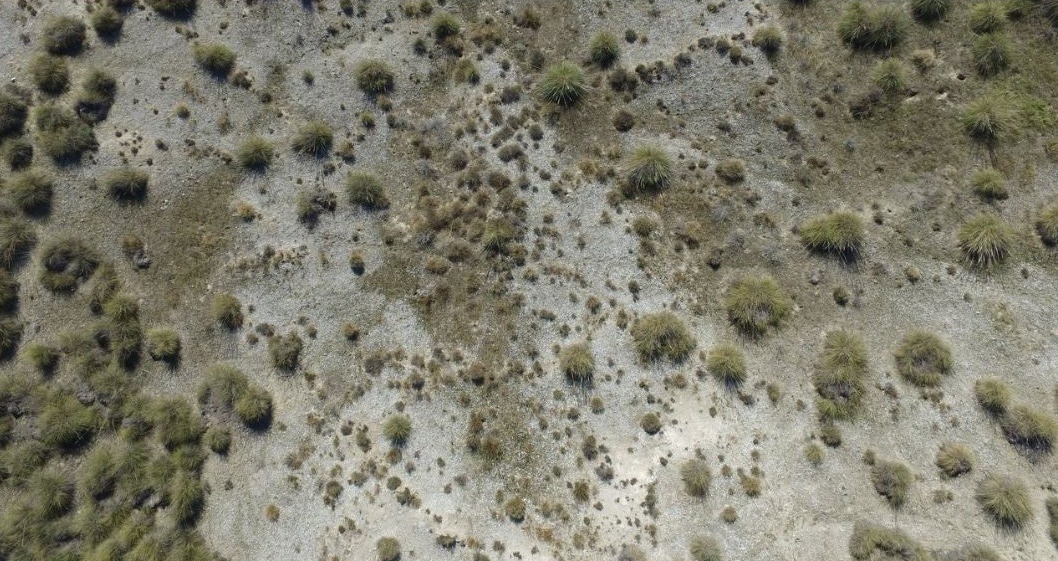Various complex systems, ranging from microbial communities to mussel beds and drylands, exhibit remarkable self-organized clusters. Theoretical models suggest that these groupings play a crucial role in the functioning of ecosystems and their capacity to adapt to environmental changes.
 This semi-arid steppe in Ciempozuelos, Spain, displays the characteristic vegetative clusters found in drylands around the world. Image Credit: Miguel García-Gómez.
This semi-arid steppe in Ciempozuelos, Spain, displays the characteristic vegetative clusters found in drylands around the world. Image Credit: Miguel García-Gómez.
A recent paper published in PNAS focuses on the spatial patterns observed in drylands, providing significant empirical evidence that validates these theoretical models.
Drylands, constituting 40% of the Earth's landmass, are regions where water is the limiting resource for life. These areas often exhibit distinctive clusters of vegetation surrounded by bare soil, easily identifiable in aerial images.
A recent study, led by SFI External Professor Sonia Kéfi, a Researcher at CNRS in France, reveals that these spatial patterns in drylands result from the challenging environmental conditions and a crucial adaptation enabling these ecosystems to operate effectively amid changing conditions. When a dryland ecosystem transitions into a degraded state, these spatial patterns vanish.
Many people have the idea that ‘interesting’ ecosystems are places like the Amazon, and that drylands are poor in some way. But they can be very rich. They are responsible for managing how water is being retained or not in these habitats, and are important for CO2 exchange.
Ricard Solé, Study Co-Author and External Professor, Santa Fe Institute
Ricard Solé is also associated with Pompeu Fabra University.
Drylands, in addition to their ecological significance, are crucial economically and culturally as they house one-third of the world's human population.
In healthy dryland ecosystems, islands of vegetation form oases with conditions slightly more favorable than the surrounding landscape. These areas typically have more water, nutrients, and shade. When the climate of an ecosystem becomes drier, these clusters of vegetation tend to shift further apart, reflecting the dynamic response of the ecosystem to environmental changes.
According to Kéfi, this phenomenon represents a double-edged sword. While these clusters enhance local conditions, they simultaneously create areas devoid of vegetation—harsh environments where a single plant would struggle to survive. If the conditions become excessively severe, the ecosystem is at risk of reaching a tipping point, leading to desertification.
Kéfi and her colleagues contemplated whether aerial images and their depiction of alterations in spatial patterns could serve as indicators of the health or degree of degradation in a specific piece of land.
“In theory, we could tell something about the ecosystem from the sky — that’s what the models predict, in very broad terms,” notes Kéfi.
To assess this, the team correlated aerial images with soil and vegetation data collected from 115 dryland ecosystems spanning 13 different countries. “This on-the-ground data shows us where one ecosystem is healthier or functioning better than other ecosystems.” By leveraging both sets of data, the team was able to evaluate the model's predictions against real-world observations.
Our results represent a significant advance in the development of tools for the management and preservation of dryland ecosystems in a warmer, drier world. More specifically, changes in spatial vegetation patterns (or the lack thereof) could be used as indicators of degradation.
Sonia Kéfi, External Professor, Santa Fe Institute
According to Solé, the study provides, for the first time, genuine validation that the model accurately predicts the nonlinear dynamics of what has been occurring in dryland ecosystems.
“The beauty of this work is that it reveals something that goes beyond the pattern-forming problem. You can talk about ecosystem health in ways that are not metaphoric, and it opens new interesting questions about how to address the future of these ecosystems,” he notes.
The authors anticipate that their research will simplify the identification of degrading systems that might be nearing a tipping point. Furthermore, given that vegetation patterning appears to be crucial in other natural systems, such as microbial communities or coastal wetlands, their findings could have implications beyond arid zones.
Journal Reference:
Kéfi, S., et al. (2024). Self-organization as a mechanism of resilience in dryland ecosystems. Proceedings of the National Academy of Sciences. doi.org/10.1073/pnas.2305153121.